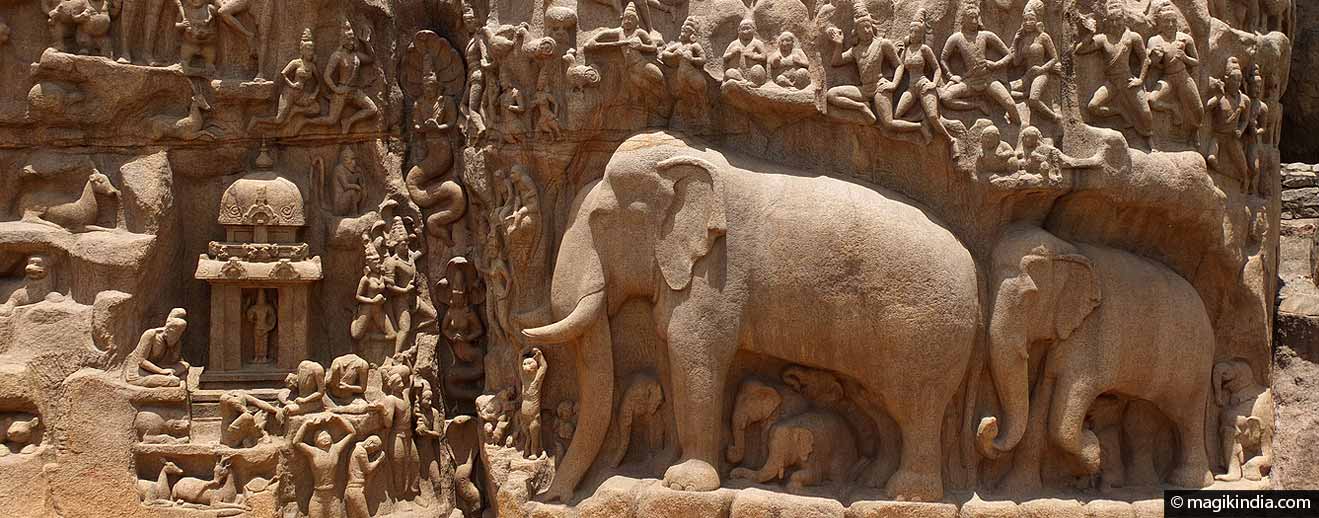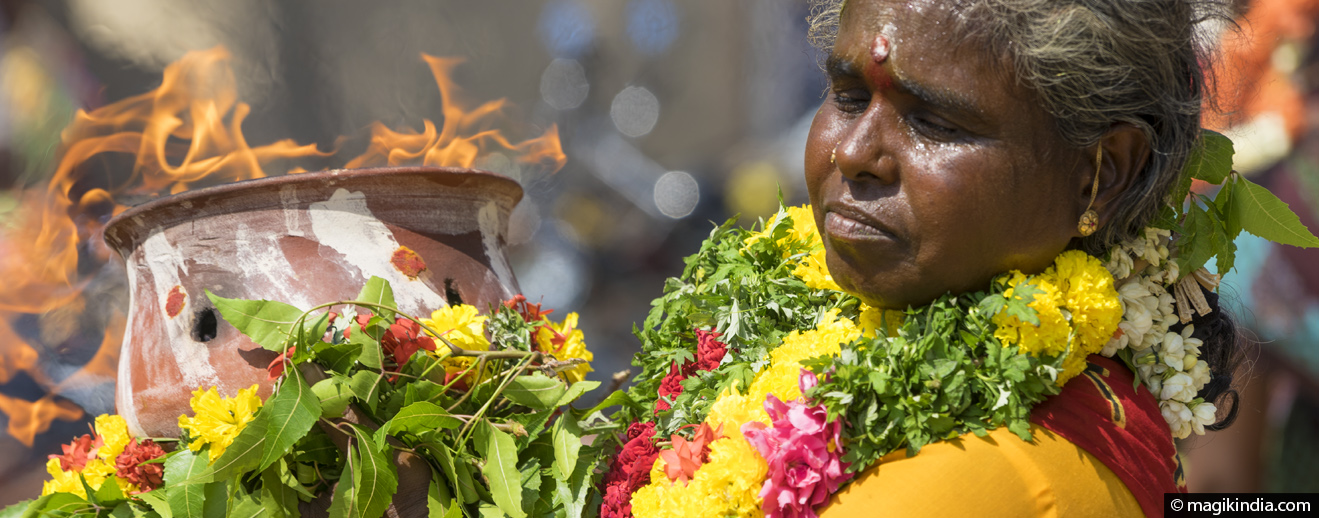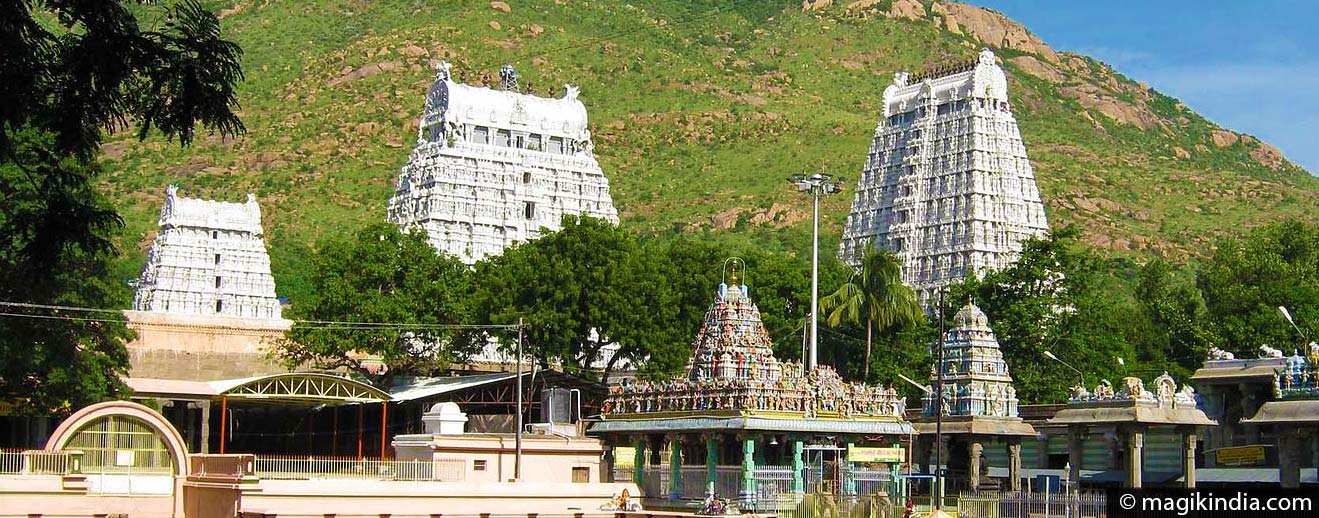
Madurai, city of the goddess Meenakshi
The legend has to that Madurai was built where a drop of divine nectar fell from Lord Shiva’s hair. The town is best known for the huge temple dedicated to Meenakshi, a masterpiece of Dravidian art and an important spiritual centre. It is undeniably one of India’s greatest temples.
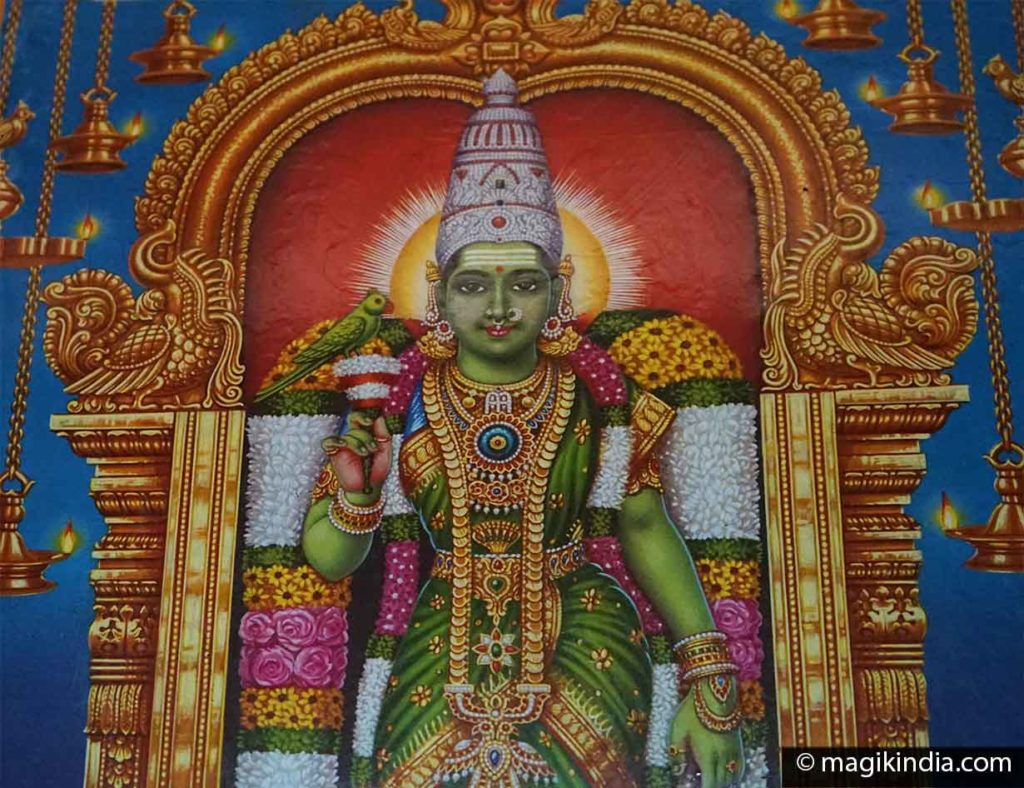
The great temple of Madurai stands on the south bank of the river Vaigai. It is dedicated to the goddess Meenakshi, one of the forms of Parvati. Meenakshi means “fish’s eye”, from meena, “fish”, and aksi, “eye”. Shiva, her divine spouse, is represented here as Sundareswarar.
A little of History of Madurai
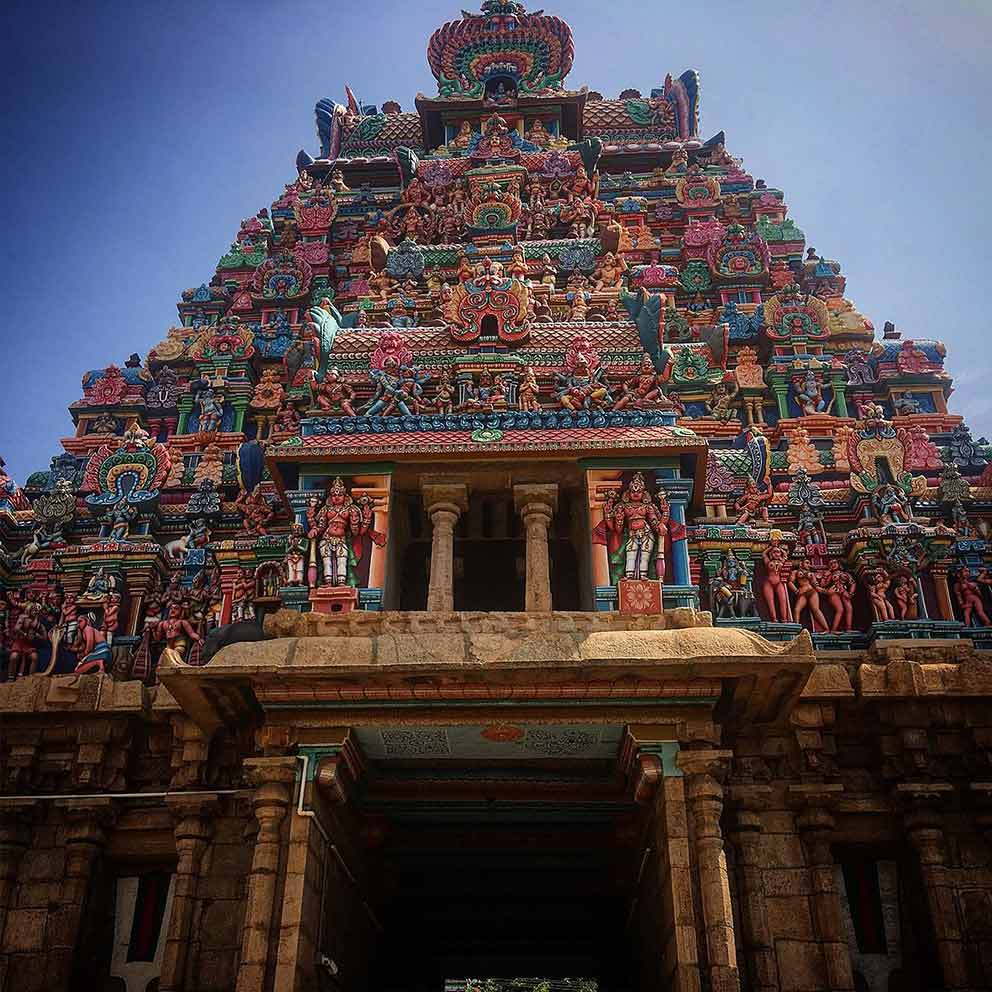
Although some religious texts from the 1st to the 4th century AD tell about of a central temple in Madurai, the temple of Meenakshi was first built by the Pandya King Kulasekara (1190-1216 AD) who erected the main gopura, the temple of Meenakshi and that of Sundareswarar.
However, the temple as it stands today was rebuilt throughout the 16th century as it was looted and destroyed by the Sultanate of Delhi in the 14th century.
When the Vijayanagar empire took control of Madurai after defeating the Sultanate, the temple was rebuilt and reopened. The temple was then enlarged at the end of the 16th century and the beginning of the 17th century by King Vishwanatha Nayakar, of the Nayaka dynasty.
Architecture of the temple
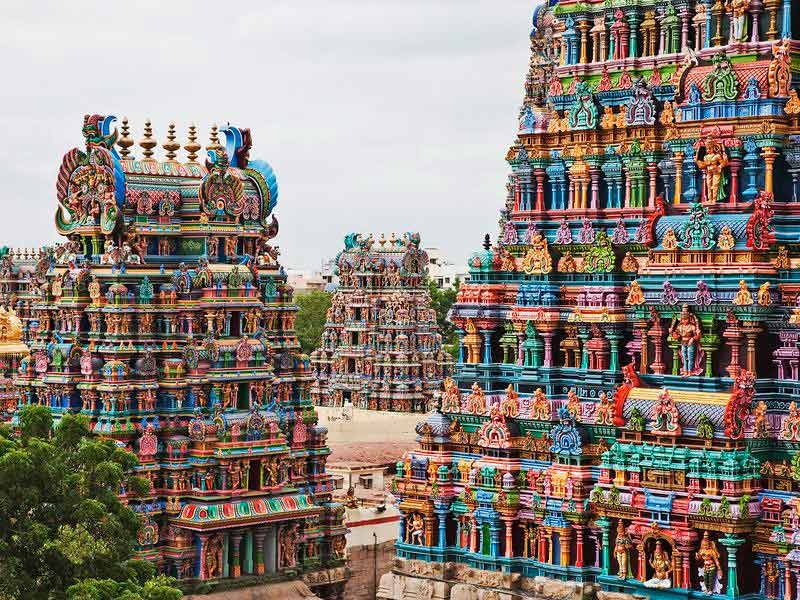
The temple covers an area of 6 hectares surrounded by an enclosure made of high walls. At the heart of it are the two shrines of Meenakshi and Sundareswarar, to which are added numerous minor shrines and a large basin.
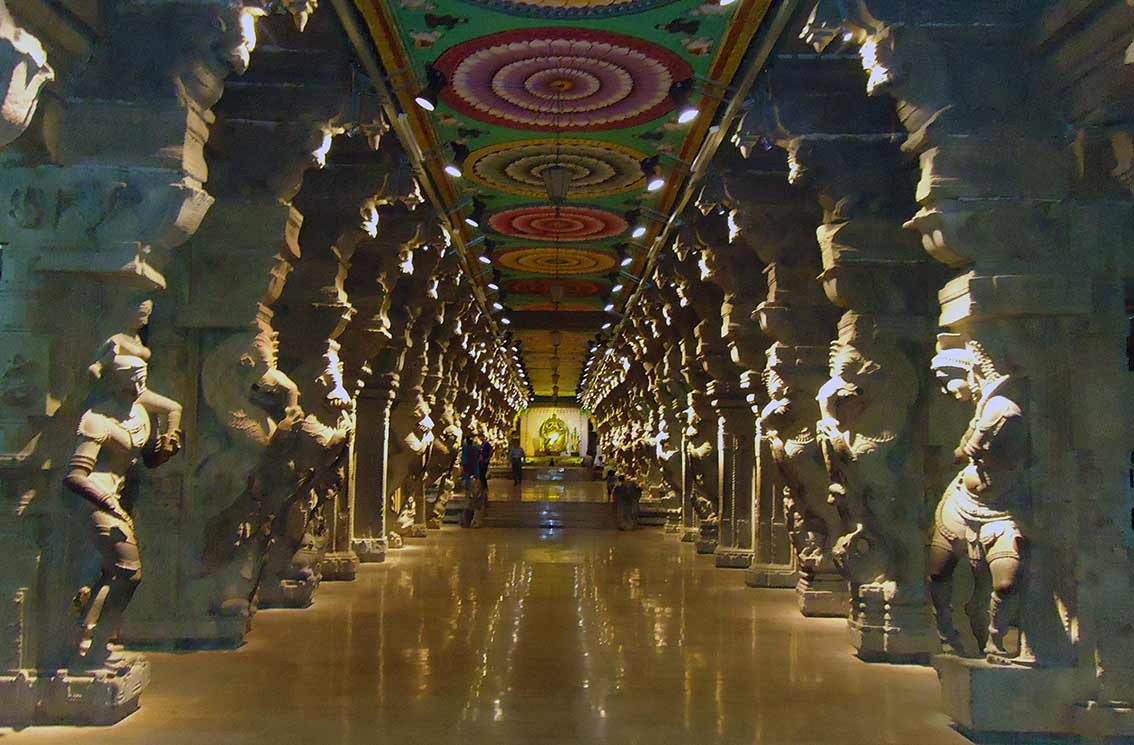
The temple has no less than 12 gopurams (towers) decorated with stucco reliefs of deities, mythical animals and monsters, all in bright colours. The highest towers are 52m tall. The temple is reckoned to contain over 30,000 statues. The jewel in the temple’s crown is the hall of a thousand painted pillar, which now serves as a museum.
The Meenakshi temple, almost a town in its own right, draws up to 25,000 visitors a day. The annual ten-day Meenakshi Tirukalyanam festival in April and May brings in nearly a million visitors.
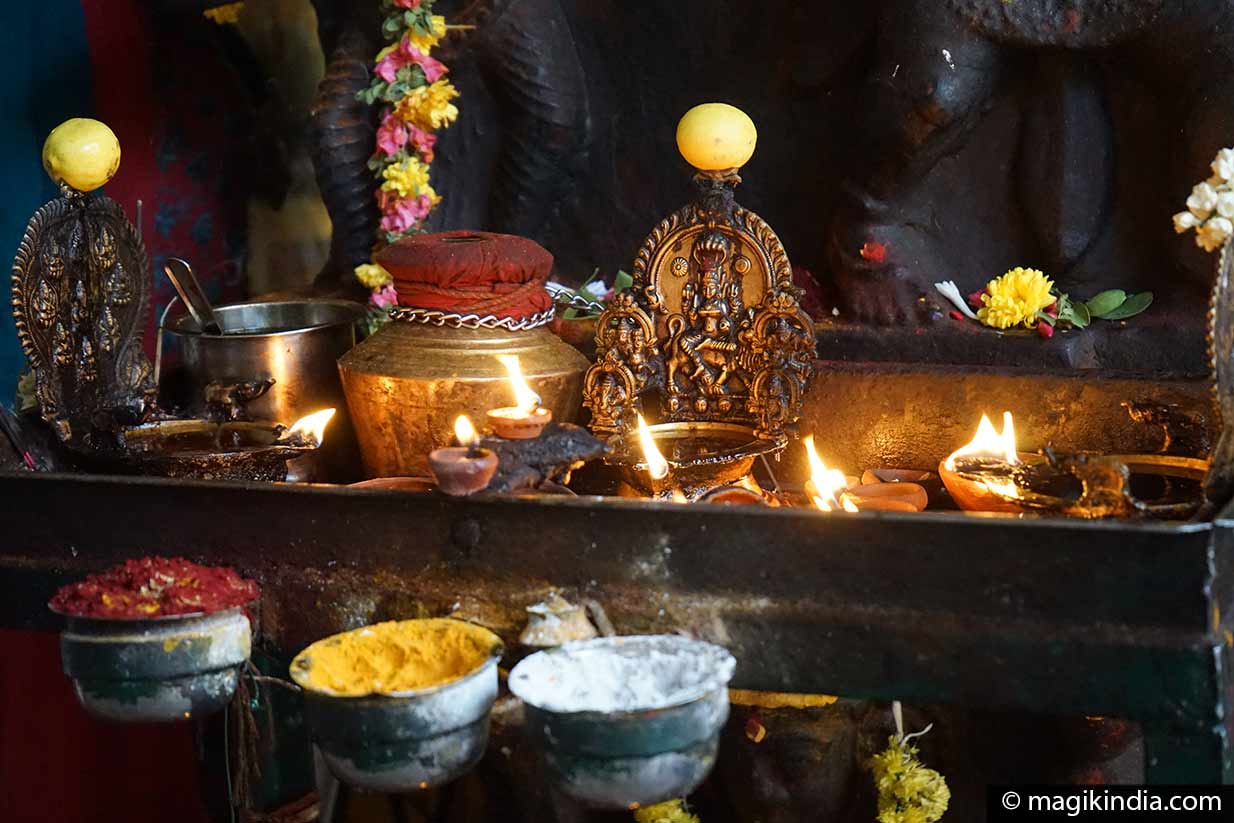
Unfortunately, as with many major pilgrimage centres in India, non-Hindus are not allowed into the sanctum sanctorum. But you can console yourself with a visit to the vibrant Pudhu Mandapam at the eastern entrance to the temple. In this old pillared hall boasting some antic statues you’ll find stalls selling all kinds of things from books to textiles and soft furnishings, and a host of tailors’ stalls. The atmosphere is quite something.

Chithirai Thiruvizha festival
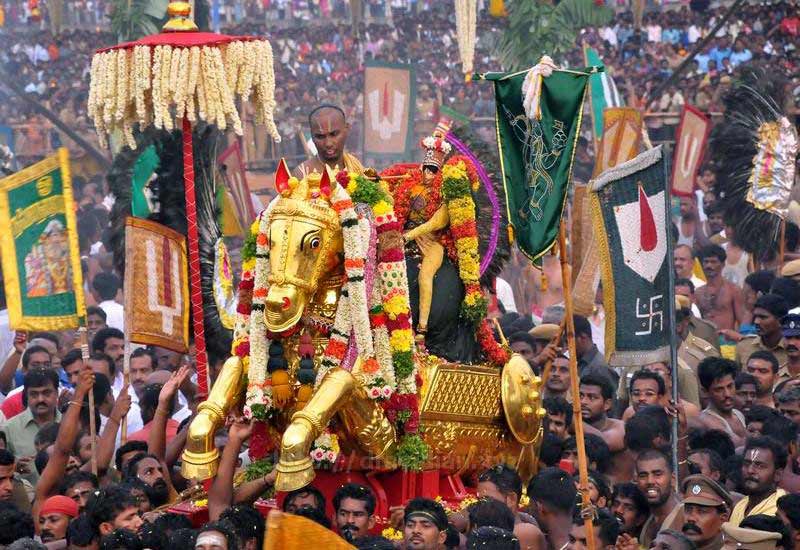
Chithirai Thiruvizha (Festival celebrated during the Tamil month of Chitirai) is an annual celebration celebrated in Madurai during the month of April. The festival marks the wedding of Goddess Meenakshi to Lord Sundareswarer (Shiva).
A procession of a gold idol of Lord Azaghar ( a form of shiva), seated on a horse, is carried out by the devotees from Azaghar Koil to Madurai. This is done to take the Lord to Madurai for attending the wedding rituals. The festival stretches on for about 10 days and the participation of the devotees is unmatched.
The origin of the festival
Legend has it that King Pandyan of Madurai, Malayadwaja, and his wife Kanchanmala have been trying for years to conceive a child but in vain. In an attempt to father an heir, Malaydwaja performed many yagams (fire rituals). Finally, during one of these rituals, a three-year-old girl emerged from the flames and sat on Kanchanmala’s lap. But what was not their surprise when they saw that this little girl had three breasts. The girl was in fact the reincarnated goddess Parvati.
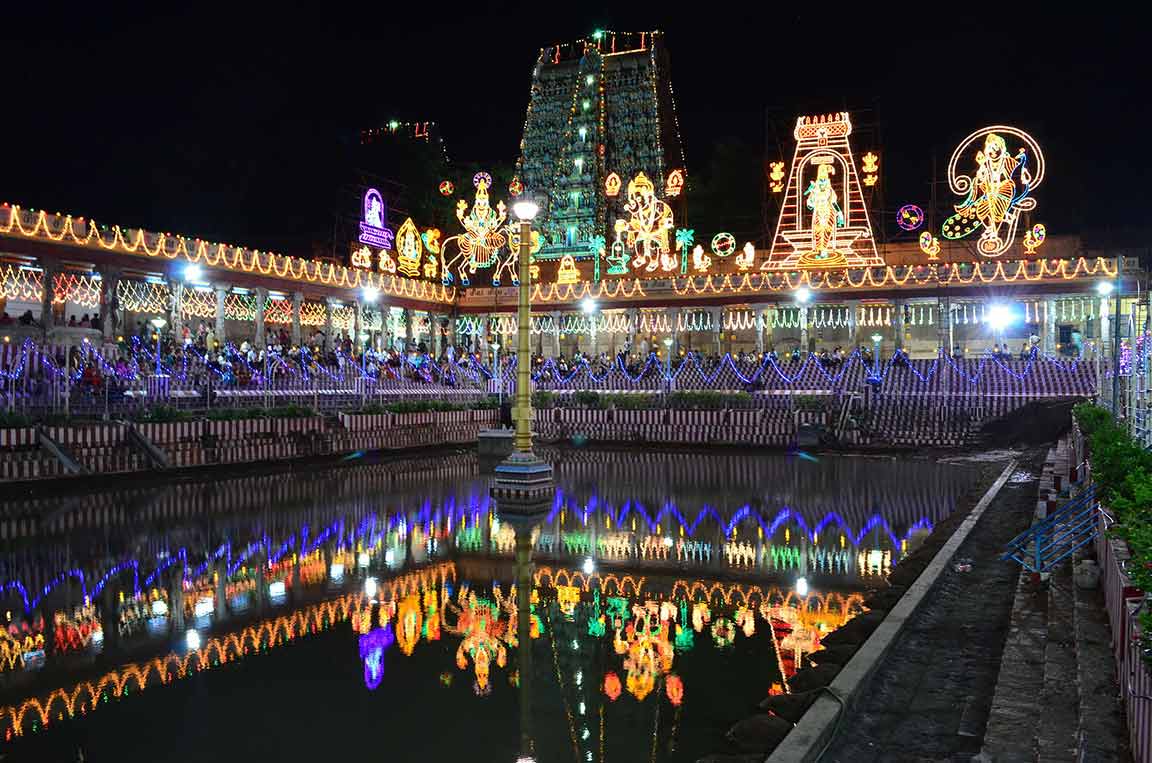
Malayadwaja was a little sad to not have a son. But suddenly, he heard a voice telling him to name the girl “Tatatakai” and raise her as if she were a boy. The voice also reassured Malayadwaja by telling her that Tatatakai’s third breast would disappear when she cast her first eye on the man who would become her husband.
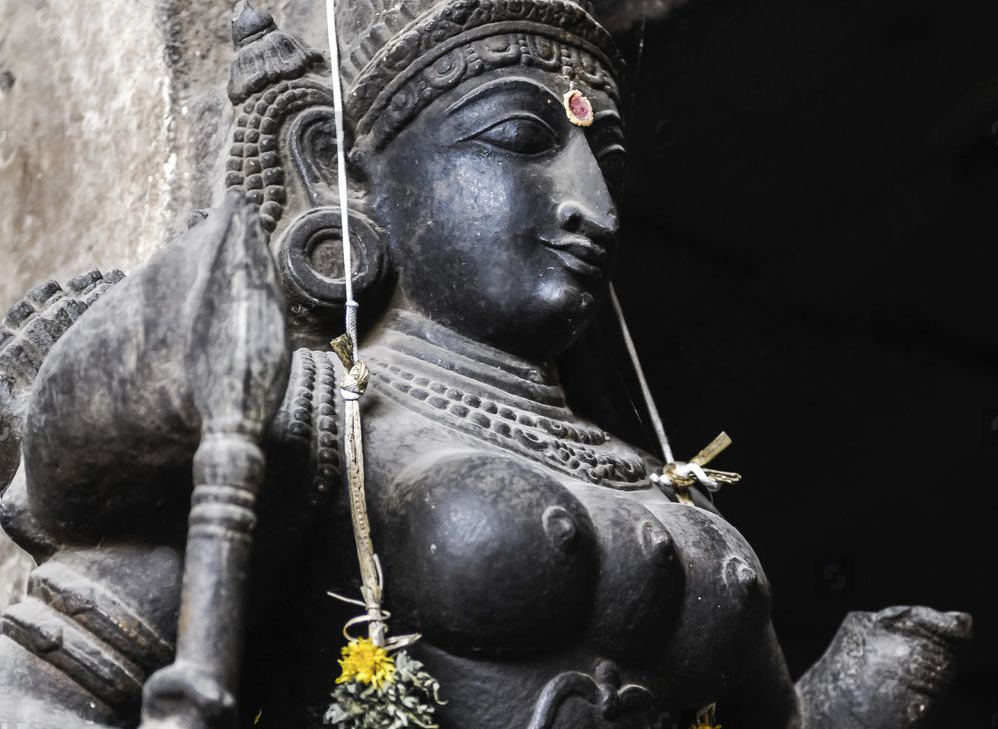
Malaydwaja obeys the divine command. He named the little girl Tatatakai and taught her the art of war. After Malayadwaja’s death, Tatatakai ascended the throne. She was a benefactor and soothsayer queen known as “Meenakshi”, the one with the eyes in the shape of a fish.
Meenakshi was above all a warrior queen and she launched several successful military campaigns throughout India. After many victories on earth, Meenakshi decided to attack the heavens, and she set off with her armies to Mount Kailash, the residence of Lord Shiva. She defeated all of Shiva’s soldiers and generals. Seeing this, Shiva himself came to meet her and see how he could defeat the fearless queen. But as soon as Meenakshi saw Lord Shiva, the prophecy came true, she became madly in love with Shiva and her third breast disappeared.
Shiva then ordered Meenakshi to return to his hometown, promising that he would join her in eight days as a husband.

Shiva did come eight days later with the Lord Vishnu who married them. From that day, the ‘Sri Meenakshi Sundareshwarar Thirukalyanam‘ (the celestial marriage of Meenakshi with Shiva) is celebrated every year in Madurai.
It is also said that Meenakshi and Shiva ruled the city of Madurai for a long time as mere mortals.

